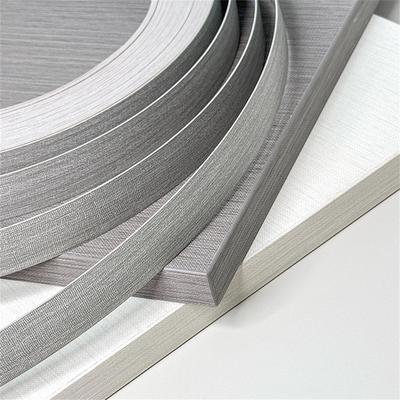What is ABS Edge Banding?
In the realm of furniture manufacturing and interior design, the term "ABS edge banding" has been gaining significant attention. But what exactly is ABS edge banding, and why is it becoming increasingly popular in the industry?

What is ABS Edge Banding?
ABS edge banding refers to a type of edge banding material made from Acrylonitrile Butadiene Styrene (ABS) plastic. It is used to cover and protect the exposed edges of various furniture components, such as particleboard, MDF (Medium-Density Fiberboard), plywood, and other engineered wood products. ABS edge banding serves both a functional and aesthetic purpose, providing a clean and finished look to furniture edges while also protecting them from moisture, impact, and wear.
Key Features of ABS Edge Banding:
1. Durability: ABS edge banding is highly durable and resistant to scratches, abrasion, and impact, making it ideal for high-traffic areas and environments where furniture is subjected to frequent use.
2. Versatility: ABS edge banding is available in a wide range of colors, textures, and patterns, allowing designers and manufacturers to match or contrast it with the surface material of the furniture for a cohesive and visually appealing finish.
3. Ease of Application: ABS edge banding is easy to apply using hot air edge banding machines or manual edge banding tools. It can be trimmed, cut, and shaped to fit the contours of different furniture profiles, providing a seamless and professional-looking edge.
4. Moisture Resistance: ABS edge banding is inherently moisture-resistant, making it suitable for use in kitchens, bathrooms, and other areas where exposure to moisture is a concern. It helps prevent moisture ingress into the furniture substrate, thereby enhancing its longevity and structural integrity.
5. Cost-Effectiveness: Compared to other edge banding materials such as PVC (Polyvinyl Chloride) or wood veneer, ABS edge banding is often more cost-effective while offering comparable performance and aesthetics.
Applications of ABS Edge Banding:
ABS edge banding finds widespread applications in various sectors of the furniture and interior design industry, including:
- Residential Furniture: Used for kitchen cabinets, wardrobes, dressers, shelving units, and other residential furniture pieces.
- Commercial Furniture: Applied to office desks, conference tables, reception counters, retail fixtures, and hospitality furniture.
- Store Fixtures: Utilized for display shelves, countertops, product showcases, and retail store fixtures.
- Architectural Millwork: Employed for wall paneling, door edges, countertop edges, and custom millwork projects in commercial and residential spaces.
Overall, ABS edge banding offers a versatile, durable, and cost-effective solution for achieving seamless and aesthetically pleasing edges in furniture and interior design projects, making it a preferred choice for manufacturers, designers, and end-users alike.









